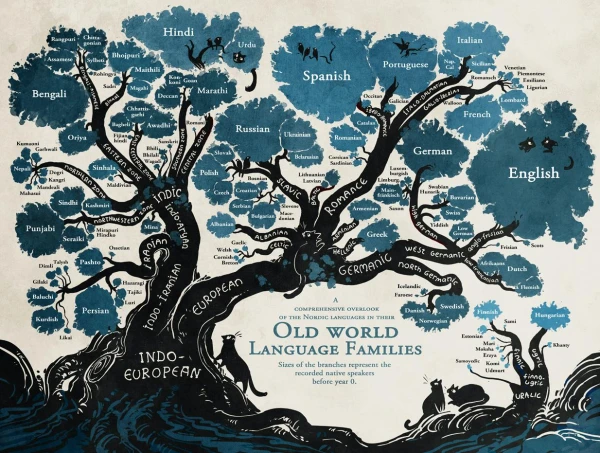
Grammatical differences are not as strongly "regulated" as linguists previously thought.
Human languages are diverse, but this diversity is limited by recurring patterns. In an effort to describe the rules that govern the differences in grammar, linguists have formulated a number of so-called grammatical universals — statements that are presumably true for all or most of the world's languages. An international team of researchers conducted a statistical analysis of 2,430 languages and found that about a third of such statements can be considered valid.
Grammatical universals describe patterns that, according to linguists, apply to all or most of the languages of the world. These statements sound, for example, like this: "If a language has a plural form, it also has a singular form" (meaning there is no language that has only a plural form), "If the word order in a language is such that the numeral follows the noun, then the adjective in that language also follows the noun." It is important to understand that universals describe not so much the similarities of languages as the rules by which languages may or may not differ from each other.
It is also significant that many universals have been formulated based on a relatively small number of languages: this does not allow for complete confidence in their correctness. Specialists from several universities in Germany and the US tested 191 grammatical universals using data from 2,430 languages. The results of the study were published in the scientific journal Nature Human Behaviour.
The authors of the publication worked with grammatical data from languages available in the Grambank database and examined universals of several types: hierarchical (concerning how grammatical categories relate in a language), related to word order (both in a narrow context, that is, within a sentence, and in a broad context — across several sentences, paragraphs, texts), and "other". Bayesian statistical analysis was used as the research method.
Based on the selected data, taking into account the relatedness and geographical connections between languages, 60 grammatical universals were confirmed, which constitutes 31% of 191. Among them were 24 hierarchical (80% of the 30 hierarchical universals included in the sample), 24 related to word order in a narrow context (37% of the 65 universals of this type in the sample), eight related to word order in a broad context (11% of the 72 such universals in the sample), and four "other" (17% of the 24 "other" universals in the sample). It turned out that hierarchical rules describing the relationship of grammatical categories in a language corresponded to reality most frequently.
According to the authors of the study, the results of the analysis allow for the conclusion that grammatical differences between languages are not as strongly "regulated" as linguists previously thought. Nevertheless, the statistical significance of a third of the examined universals confirms that this difference is not accidental but is indeed limited by a number of patterns.














Leave a comment